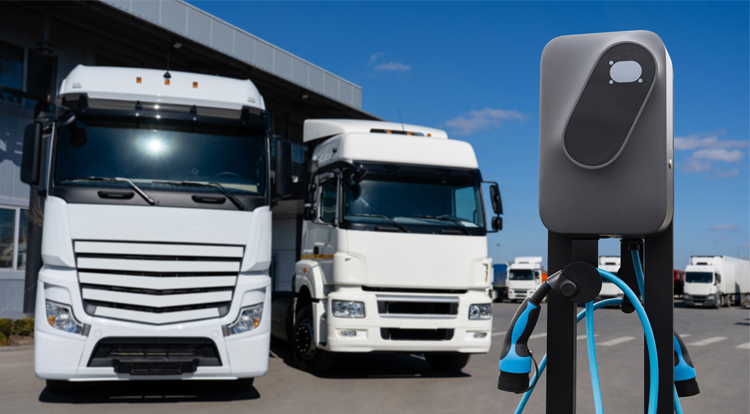EV Phase-In Rate
SAVE MONEY WITH AN ELECTRIC RATE DESIGNED FOR EV CHARGERS

The Electric Vehicle Phase-In Rate (EV PIR) is a new commercial electric rate available to help offset demand charges. EV PIR is available on electric accounts with EV charging that are on a demand rate (SC-2D, SC-3, SC-3A) with certain load factors. It replaces standard demand charges with a combination of reduced demand charges and offsetting time-of-use (TOU) energy charges.
Why enroll in the EV Phase-In Rate?
The EV PIR helps customers save money as they build up EV charging usage at their site. Medium-to-large commercial customers are often billed on demand rates where the largest bill component is the often the Distribution Delivery Demand Charge, which is based on peak demand (kW) in the billing period. New EV charging sites may have a low load factor, meaning they have high demand (kW) during the billing period but don’t experience that demand very often. This can lead to higher costs relative to the amount of energy (kWh) used. The EV Phase-In Rate is designed to offer cost relief for customers as they grow their EV charger use over time. The EV Phase-In Rate utilizes four Demand Charge tiers based on load factor where customers will gradually move from mostly time-of-use energy charges to fully demand-based charges for their Distribution Delivery Demand Charge. The other components of the bill retain the same structure as all other rates.
Eligibility
To be eligible for the EV Phase-In Rate, the customer must be:
- A commercial electric customer of National Grid in New York State
- Being billed on a demand-based rate (SC-2D, SC-3, SC-3A)
- Customer must have on-site EV charging, with a charging ratio of 50% or greater
- Charging Ratio: Fraction of max site load that is EV Charging

EV Phase-In Rate tiers
Accounts enrolled in the EV PIR will be assigned to a Tier based on their Load Factor. New electric accounts without 12 months of historical data will be put into Tier 1, then recalculated at the next recalculation date (June or December) when the account has at least 6 months of data.
If an account falls out of demand rates (its rate class is switched to SC-2 non-demand) or is recalculated with a load factor above 25%, then the account is placed in the appropriate standard rate. Load factor recalculations will continue for 2 years, bringing the account back into EV PIR if its load factor comes back below 25% or it is switched back to a demand rate.
Learn more
Current offered rates are listed in the EV Phase-In Rate Guide.
Frequently Asked Questions
Load Factor is calculated using the formulas below:
- If the site is separately metered (the only load is EV chargers):

- If the site is not separately metered (there is non-EV charger load on the account):

Charging Ratio: Fraction of max site load that is EV Charging

It should be noted that, if an account falls out of demand rates (its rate class is switched to SC-2 non-demand) or is recalculated with a load factor above 25%, then the account is placed in the appropriate standard rate. Load factor recalculations will continue for 2 years, bringing the account back into EV PIR if its load factor comes back below 25% or it is switched back to a demand rate.
